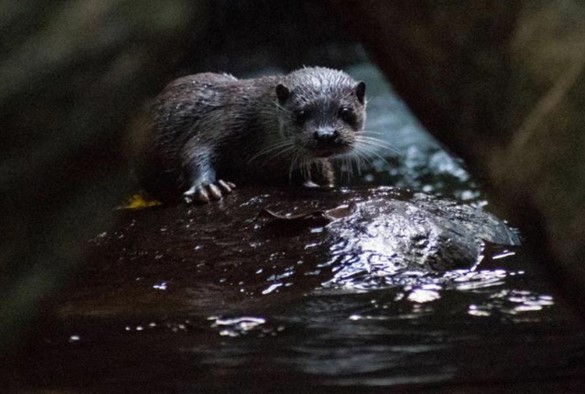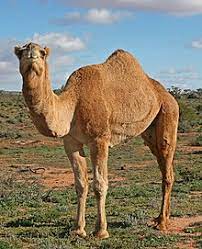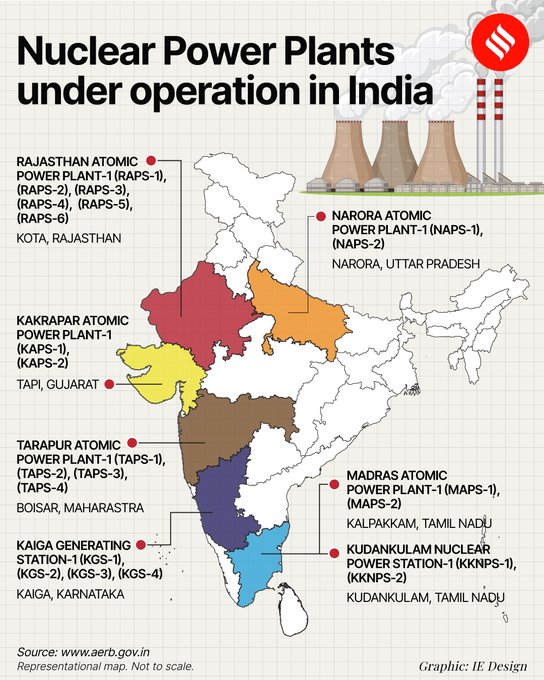|
Other Important News
|
|
Eurasian otter (Lutra lutra)
- Eurasian otter discovered for the 1st time in the Chinnar Wildlife Sanctuary, Kerala recently.
- It is a semiaquatic carnivorous mammal that is native to Eurasia.
- They are shy and nocturnal and found near small streams in the interior forests and distributed through Europe, Asia, and Africa.

- Conservation Status
- IUCN - Near Threatened.
- CITES - Appendix I.
- Wildlife Protection Act, 1972 - Schedule II
|
|
Huntington’s disease
- Huntington's disease (HD) is a rare, inherited disease that causes the progressive breakdown of nerve cells in the brain.
- It's also known as Huntington's chorea. HD attacks areas of the brain that help to control voluntary movement, as well as other areas.
- Symptoms usually start between the ages of 30 and 50.
- No cure exists, but drugs, physiotherapy and speech therapy can help manage some symptoms.
|
|
Nandankanan Zoological Park (NZP)
- Nandankanan Zoological Park (NZP) is a zoo and botanical garden established in 1960 in Bhubaneswar, Odisha.
- Nandankanan is India's first zoo to join the World Association of Zoos and Aquariums (WAZA) in 2009.
- Nandankanan is the first zoo in the World to breed White tiger and Melanistic tiger.
- Nandankanan is the only conservation breeding centre of Indian Pangolins in the world.
|
|
Louis Pasteur
- Louis Pasteur (1822 - 1895) was a French chemist and microbiologist who is known for his discoveries in vaccination, microbial fermentation, and pasteurization.
- He is considered one of the first scientists to discover the role of microorganisms in disease and how vaccines can prevent sickness.
- He developed the vaccine against Rabies.
|
|
Aardvark (Orycteropus afer)
- The aardvark is a burrowing, nocturnal mammal native to Africa.
- The name aardvark comes from Afrikaans and means "earth pig" that hunts termites and ants at night.
- Aardvarks are found in sub-Saharan Africa, except for Namibia, Ivory Coast, Ghana, and Madagascar.
- Conservation Status

|
|
Talabira power project
- The NLC Talabira Thermal Power Project is a 2,400 MW coal-based thermal power plant in Odisha.
- The project is a Non-National Infrastructure Pipeline (NIP) Central PSU Electricity Generation project.
- It will be an ultra-super critical thermal plant.
- The 2,400 MW is to be shared by Tamil Nadu 1,500 MW, Puducherry 100 MW, Karnataka 400 MW and Odisha 400 MW.
|
|
Indian SARS-CoV-2 Genomics Consortium (INSACOG)
- Established by - Ministry of Health and Department of Biotechnology, Council for Scientific & Industrial Research (CSIR) and Indian Council of Medical Research (ICMR).
- Aim – To assess SARS-CoV-2 Variants in India.
- To generate Whole Genome Sequencing (WGS) data of the virus which can be correlated with clinical epidemiological data for advanced preparedness for public health interventions.
|
|
Syn gas
- Synthesis gas (syngas) is a combustible mixture of hydrogen and carbon monoxide, often containing carbon dioxide and methane.
- It's primarily used to produce methanol or ammonia, and can also be used as a fuel.
- Syngas is derived from carbon-containing feedstocks like biomass, natural gas, heavy oil, and coal.
|
|
Agadagidi
- Agadagidi is a traditional alcoholic beverage in Nigeria made from fermented overripe bananas or plantains.
- The traditional process for preparing agadagidi involves microorganisms like yeasts and bacteria at various stages of fermentation.
|
|
Welfare board for Gig Workers
- The labour welfare and skill development department has constituted the Tamil Nadu Platform Based Gig Workers Welfare Board recently.
- It will cater to workers in e-commerce services including online food delivery and cab aggregators.
|

